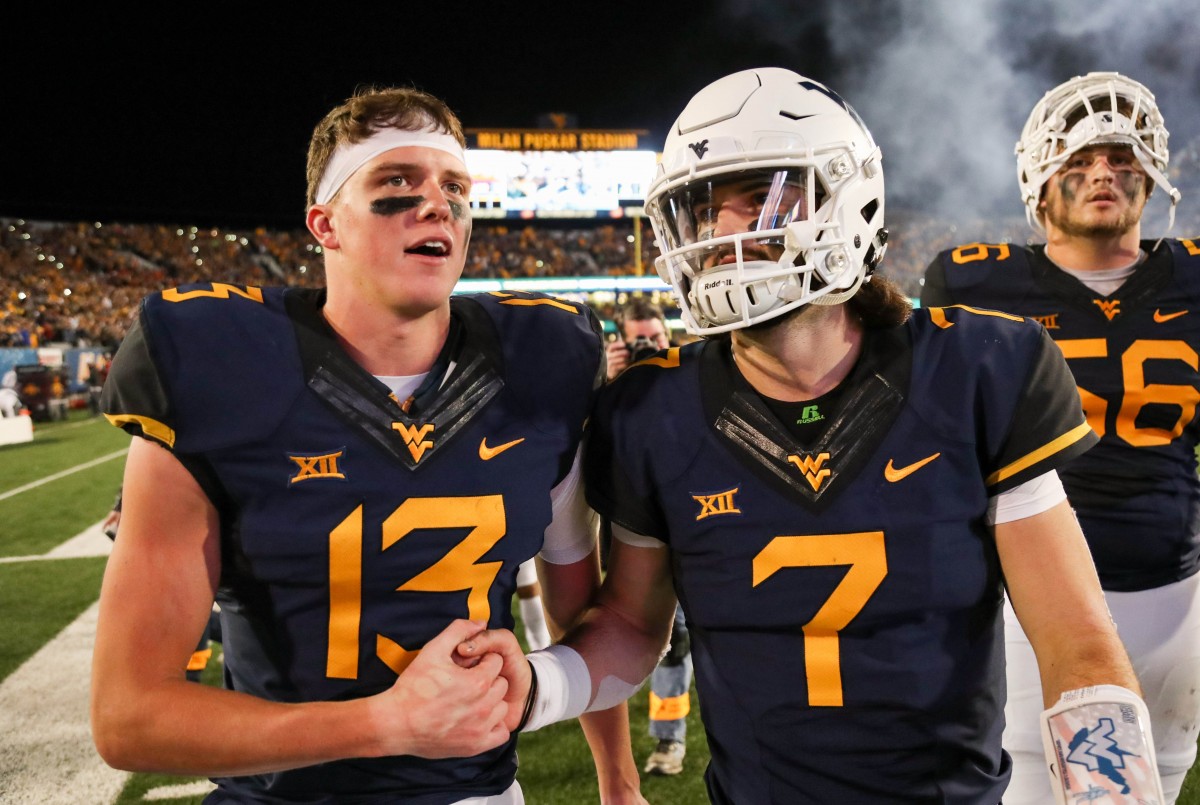MORGANTOWN, W. Va. – If this story was written by Will Grier, there’s a chance only David Sills would understand it.
The West Virginia stars have a secret language that not even Dana Holgorsen can decipher.
“They just look at each other and do some sort of body language and know what they’re gonna do,” Holgorsen said. “I don’t know how they do it. They just do it. Only them two know what it is.”
The Mountaineers head coach doesn’t need to know how they do it so long as he can continue to reap the results of the Grier-Sills Code. Grier has connected with Sills for five touchdown passes through three games, giving the duo a total of 23 touchdown connections since the start of last season.
The connection is particularly acute inside the 10-yard line. Four of Sills’ touchdown grabs this year are inside the 10, including his trio of 1-yard scores against Kansas State.
“The relationship that exists between Will and David from the 10-yard line in,” Holgorsen said. “I’ve seen some great ones, but I’ve never seen anything like this.”
The numbers put up by the pair are bolstered by Grier’s green light to change plays after the Mountaineers break the huddle. Holgorsen and offensive coordinator Jake Spavital have given the quarterback carte blanche – if he sees a better play based on how the defense is aligned, he has the right to switch on his own.
“We give him a lot of freedom,” Spavital said. “He can do whatever.”
Sills isn’t the only beneficiary. Against Kansas State, Grier audibled to Marcus Simms on back-to-back plays, including an 82-yard touchdown pass. But when West Virginia creeps closer to the goal line, there’s little doubt as to who Grier is looking for if the defense has the original play diagnosed.
The key for Sills is determining whether Grier has made a change, because that’s how subtly the quarterback makes the adjustment. Not even the offensive line is aware that anything is different.
“He’s the best in the business in doing it and making the signals discrete so the defense doesn’t know it,” Sills said.
This language is not a complex series of signs like you’d see from a baseball third-base coach to a batter, or even from a catcher to a pitcher.
“It’s more like a raised eyebrow or something,” Sills said. “It can’t give the defense a tip-off. He even keeps his head still and looks out with his eyes because he doesn’t want the linebacker to see.”
Grier said the language has evolved thanks to the time he and Sills have worked with each other over the last two seasons.
“It’s a living thing. A silent communication,” Grier said. “It goes both ways. Through so much practice, we can almost look at each other and know what we want.”
And at this point, that’s pretty much what they’re doing. Though there are plenty of signals in Grier and Sills’ secret code, most of them are unused thanks to something closer to telepathy than language.
“We have a lot [of indicators], but we don’t use as many as you’d think because we talk so much and we’re on the same page so much,” Grier said. “We don’t really need to in a lot of different situations. Especially near the goal line.”

















